Key takeaways:
- Resource advocacy empowers communities by transforming despair into hope through informed participation and personal stories.
- Public health portals are vital for disseminating information, fostering collaboration, and guiding individuals in decision-making.
- Effective advocacy involves building coalitions, embracing storytelling, and adapting strategies based on community feedback.
- Listening actively and exercising emotional intelligence are crucial for creating inclusive solutions and fostering genuine connections in advocacy work.
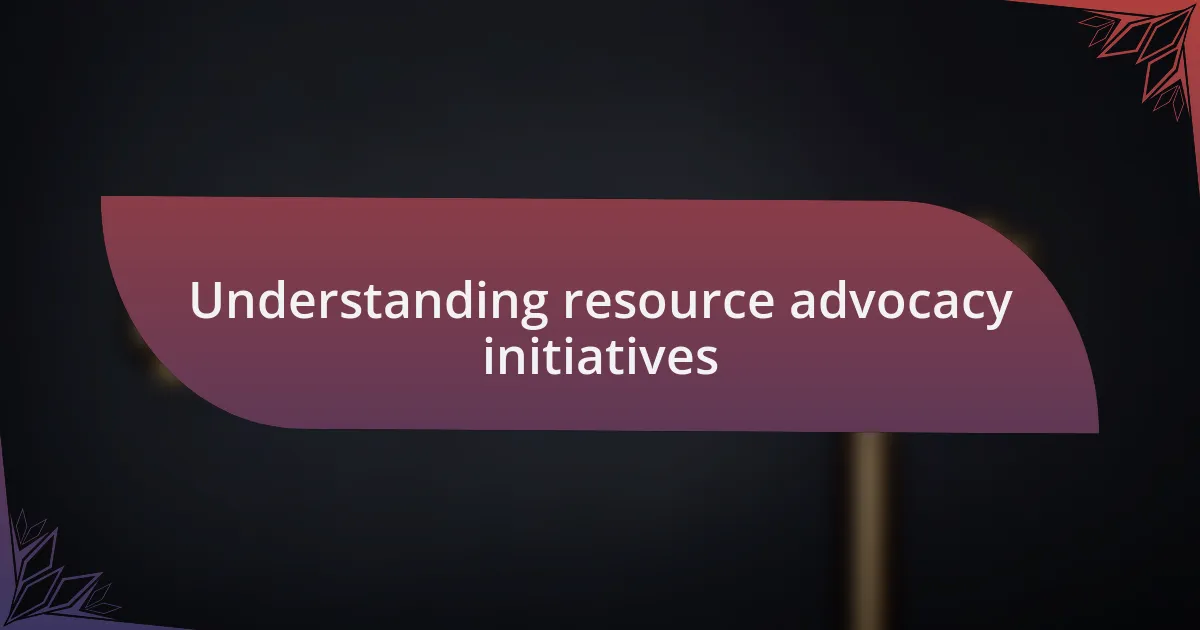
Understanding resource advocacy initiatives
Resource advocacy initiatives play a crucial role in bridging the gap between communities and the resources they desperately need. I remember participating in a local project where we advocated for increased mental health services. It was eye-opening to see how powerful our voices could be when united towards a common goal—every meeting felt like planting a seed for future growth.
Sometimes, I find myself reflecting on the emotional stakes involved in these initiatives. Can you imagine being in a community without access to basic health resources? It can be heartbreaking. That’s why understanding the needs of the community is paramount. The stories people share during advocacy efforts can be incredibly moving. They remind us why we fight for these changes, serving as motivating forces to keep pushing forward.
What I’ve noticed is that resource advocacy is not just about policy changes; it’s also about empowerment. I have witnessed firsthand how providing information can inspire individuals to take charge of their well-being. When communities become informed advocates, the entire landscape of public health shifts, transforming despair into hope. This empowerment is invaluable, fostering a sense of ownership over their health and future.
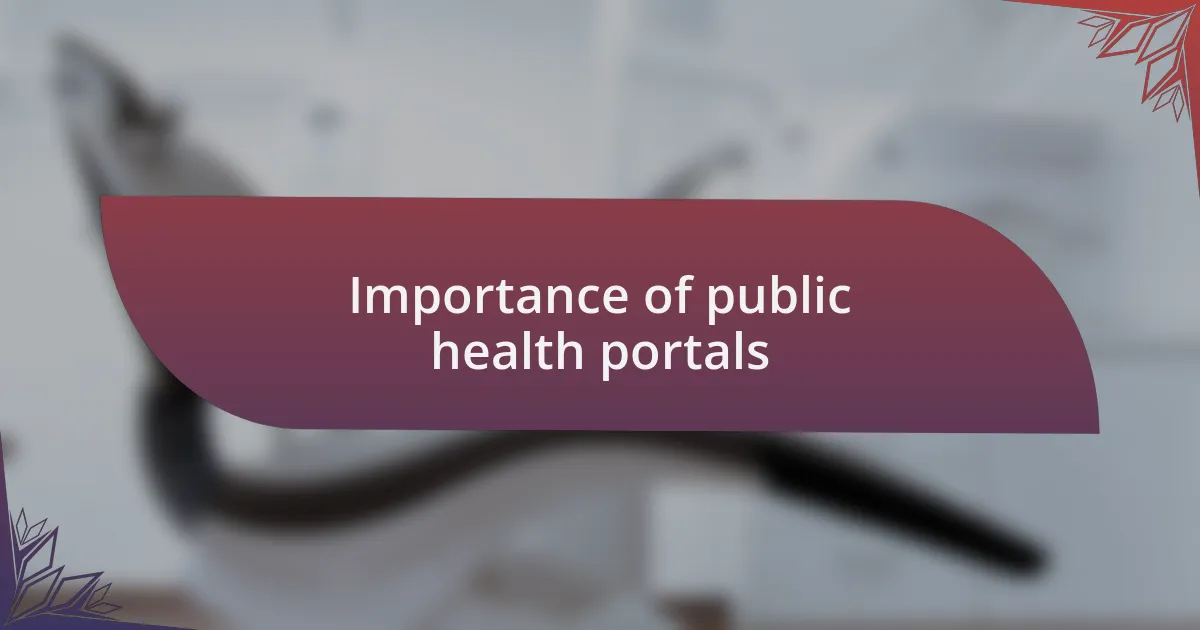
Importance of public health portals
Public health portals serve as essential hubs for disseminating vital health information. Reflecting on my experiences, I see these platforms as lifelines, especially in times of crisis—like the pandemic. They not only provide data but also guide individuals in making informed decisions about their health, which can be a game changer.
I often think about how accessible information can act as a beacon of hope. During a community health fair I attended, many people expressed gratitude for being able to access reliable resources. These portals empower communities to seek out the care they need, turning knowledge into action. Isn’t it incredible how just knowing where to find help can change someone’s life?
Moreover, public health portals can foster collaboration among stakeholders in the health sector. In my own advocacy work, I’ve seen how these platforms can facilitate partnerships between government agencies and local organizations. By bringing diverse resources together, they enhance the overall response to public health issues. It’s like weaving a safety net that can catch those in need, ensuring no one falls through the cracks.
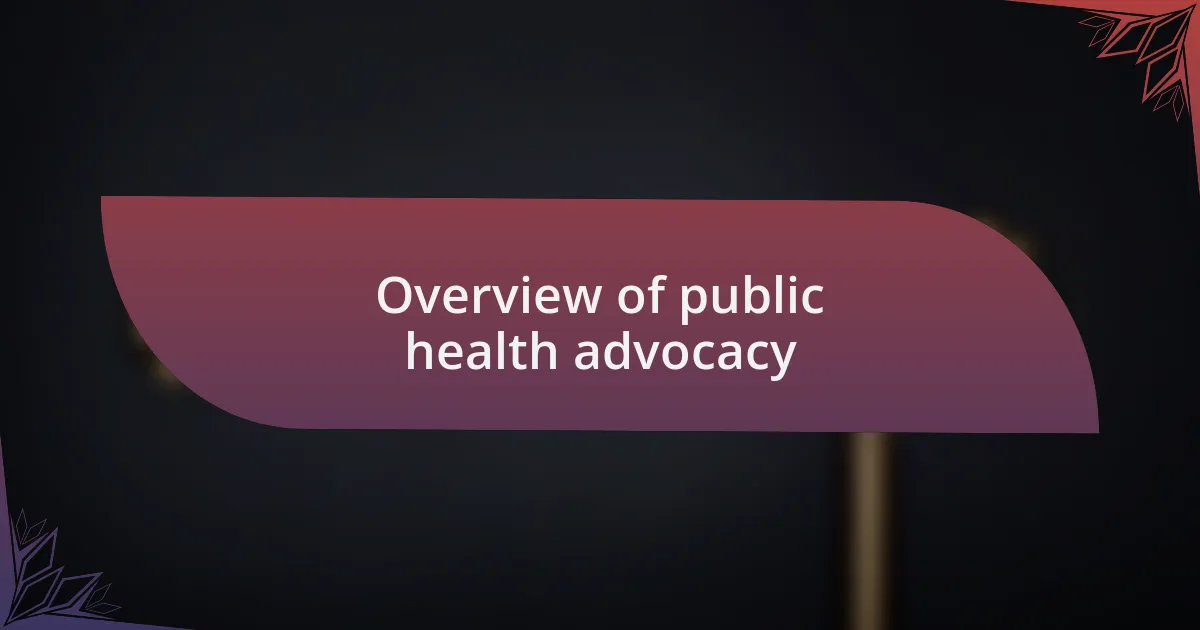
Overview of public health advocacy
Public health advocacy encompasses efforts to promote and improve public health policies, access to healthcare, and the overall wellbeing of communities. In my experience, I’ve witnessed how such initiatives bring diverse groups together, amplifying voices often unheard, especially in marginalized communities. When I participated in a local health policy forum, I saw firsthand the passion of advocates rallying for better mental health resources; their energy was infectious and inspiring.
The way advocacy can change perceptions is remarkable. I remember attending a workshop where healthcare disparities were highlighted, and it truly struck me. Some participants shared personal stories about barriers they faced in accessing care, which turned abstract statistics into real-life struggles. This human connection emphasizes the significance of advocacy—not just in promoting ideas but in transforming lives through actionable change.
Advocacy isn’t just a corporate responsibility; it becomes a personal mission for many. During my journey, I’ve found that simply sharing experiences can ignite conversations and motivate others to join the cause. Have you ever witnessed a community rallying around a public health issue? Those moments serve as powerful reminders of our collective strength and the difference we can make when we stand together for better health outcomes.
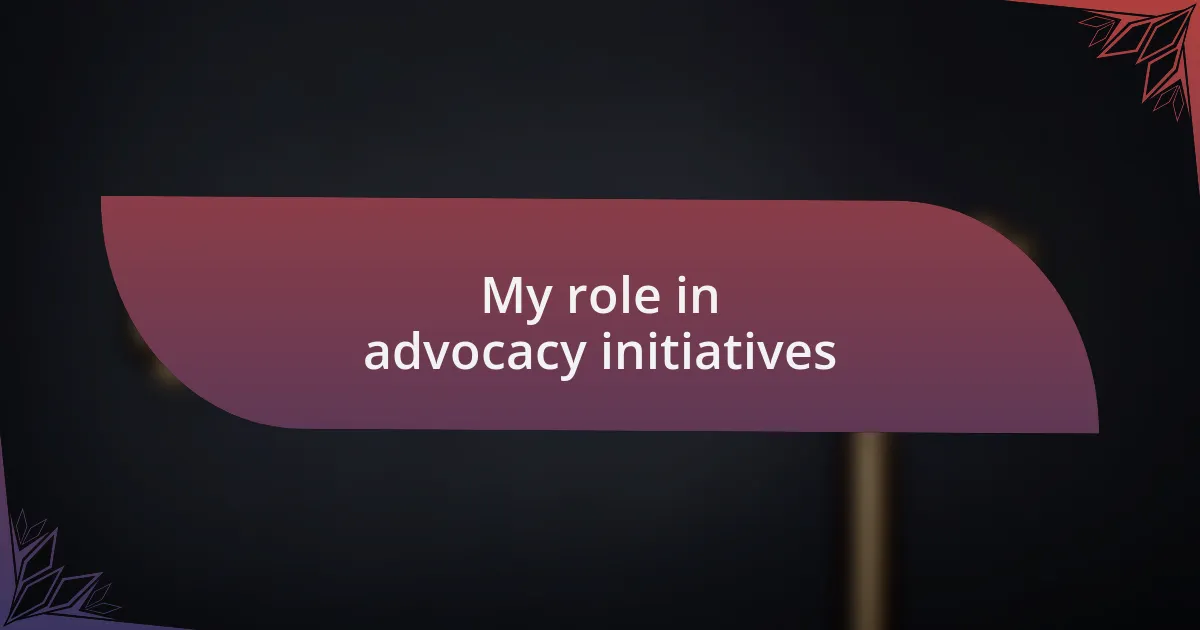
My role in advocacy initiatives
In my role, I often find myself at the intersection of passion and action. For instance, while advocating for affordable mental health services, I organized a community event that brought together mental health professionals and individuals struggling to find support. The conversations I witnessed that day reminded me of the powerful connections that can form when people share their stories; it was a testament to how advocacy can create a space for healing and understanding.
One time, I joined a coalition working to address childhood obesity in our local schools. I vividly recall how one mother, sharing her challenges, shed tears as she described her child’s struggles with bullying over weight issues. Her vulnerability resonated deeply with everyone present. It reinforced for me how advocacy initiatives aren’t just about addressing policies—they’re about telling truths that often go unnoticed, igniting a collective commitment to change.
Moreover, I’ve realized that my role in these initiatives often requires me to listen as much as I speak. Engaging with diverse community voices not only broadens my perspectives but also enriches the advocacy efforts. Have you ever thought about how crucial it is to create an inclusive dialogue? Every voice matters, and it’s through these shared experiences that we can forge a path towards equitable solutions together.

Challenges faced in advocacy work
Advocacy work is undeniably rewarding, but it comes with its own set of challenges. One of the significant hurdles I’ve faced is the overwhelming resistance to change. I remember a particular campaign where, despite our best efforts, local officials were reluctant to adopt healthier school lunch programs. It made me question—how do you motivate individuals and systems that seem set in their ways?
Similarly, the emotional toll of advocacy can be draining. There have been moments when I felt the weight of every story shared, especially when they come from those who have been marginalized. Sometimes, leaving a meeting, I would feel a sense of helplessness despite knowing we were making strides. How do we keep our spirits high when the road ahead seems so daunting?
Moreover, funding can be a considerable barrier in sustaining advocacy efforts. I’ve witnessed firsthand how a lack of financial support stifles innovative ideas and vital programs. It begs the question: how can we sustain momentum in advocating for those who need it most when resources are so limited? These challenges often push me to think creatively about solutions, transforming them into stepping stones rather than obstacles.
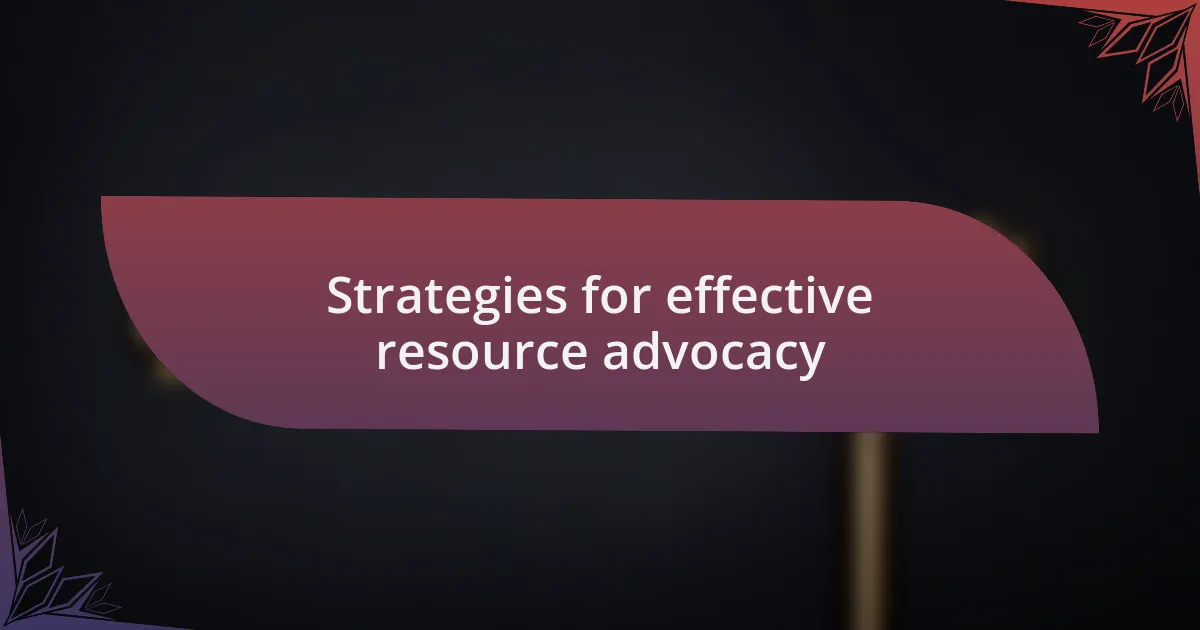
Strategies for effective resource advocacy
One effective strategy for resource advocacy is building strong coalitions with like-minded organizations. In my experience, I’ve found that pooling resources and expertise can amplify our voices significantly. There was a moment when we partnered with local health clinics and schools, and together, we created a campaign that reached thousands. This collaboration not only strengthened our message but also provided diverse perspectives that enriched our advocacy efforts.
Another crucial tactic is the power of storytelling. Personally, I’ve always felt that numbers and statistics can only go so far. When we shared personal stories from community members affected by health disparities, it changed the narrative entirely. I remember a vivid account from a single mother who struggled to access healthy food options; her story resonated deeply with local policymakers. How can we ignore the emotional impact of a real-life experience that invites empathy and encourages action?
Finally, I can’t stress enough the importance of continuous education and training for advocates. I’ve attended workshops that focused on effective communication strategies, which helped me articulate our goals more clearly and persuasively. In my journey, I’ve learned that staying informed about current health trends and best practices not only builds my confidence but also enhances my credibility with stakeholders. How prepared are you to adapt your advocacy strategies as new information and challenges arise?

Lessons learned from my experience
Throughout my journey in resource advocacy, one of the most impactful lessons I’ve learned is the necessity of listening actively. There was a time when I was so focused on presenting our agenda that I nearly overlooked the concerns of the community we aimed to support. It wasn’t until a community meeting, where parents voiced their urgent needs for mental health resources, that I realized how crucial it is to prioritize their voices. Listening isn’t just a passive act; it’s a powerful tool for crafting solutions that truly resonate.
Another significant insight for me was the necessity for adaptability. During a campaign, we encountered unexpected challenges that threatened our progress. These hurdles forced us to rethink our strategies and adjust our messaging. I remember one meeting where my team brainstormed on the fly, changing the entire direction of our approach based on current feedback. This experience taught me that flexibility is vital—how often do we stick rigidly to our plans, even when it’s clear that change is needed?
Finally, I came to understand the transformative role of emotional intelligence in advocacy work. Interacting with diverse stakeholders requires a genuine connection that goes beyond mere information exchange. There was a moment when a meeting felt particularly tense, and I decided to share my own struggles with accessing health services during a personal crisis. This vulnerability broke down barriers and created a supportive atmosphere where everyone felt heard. I often wonder, how many opportunities for connection and collaboration do we miss when we only focus on the facts?